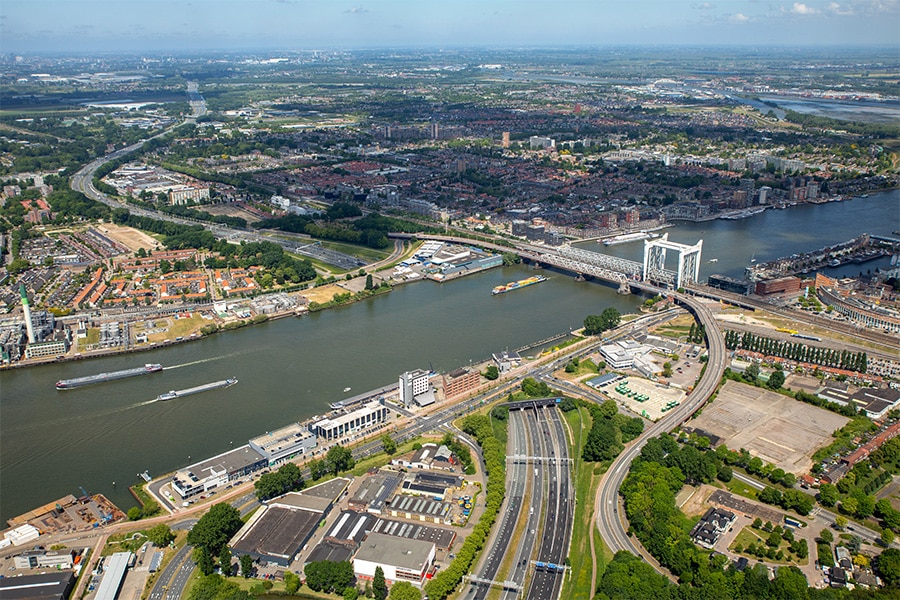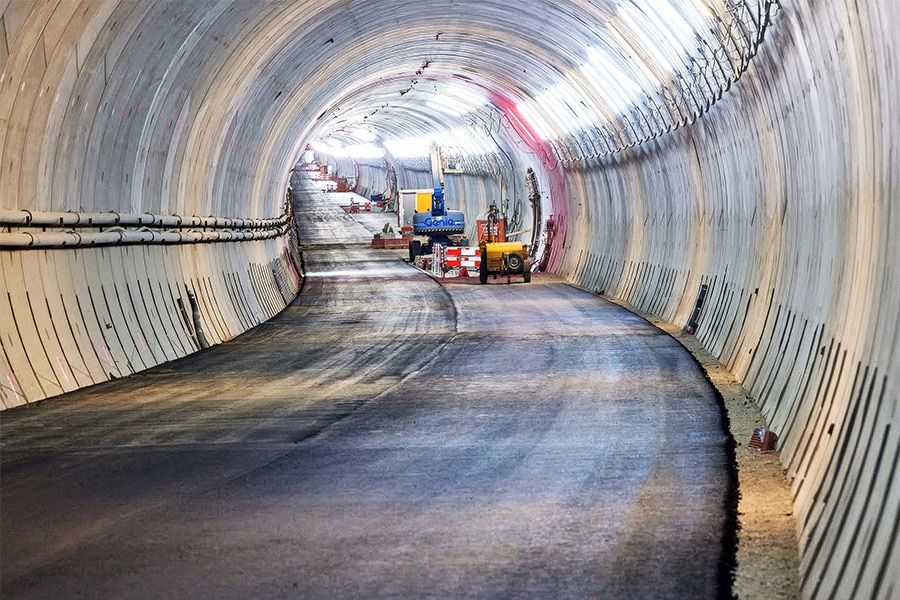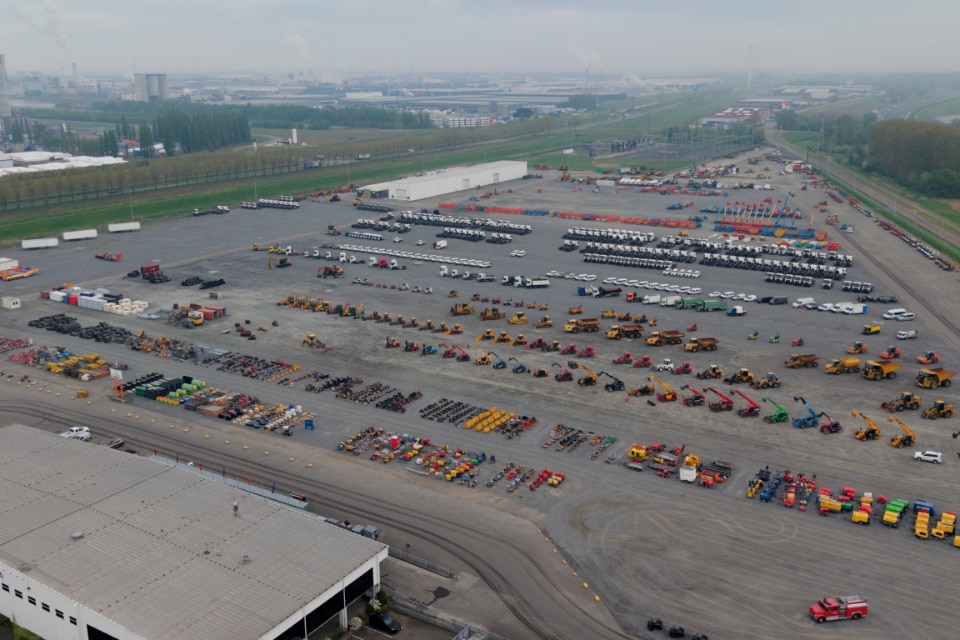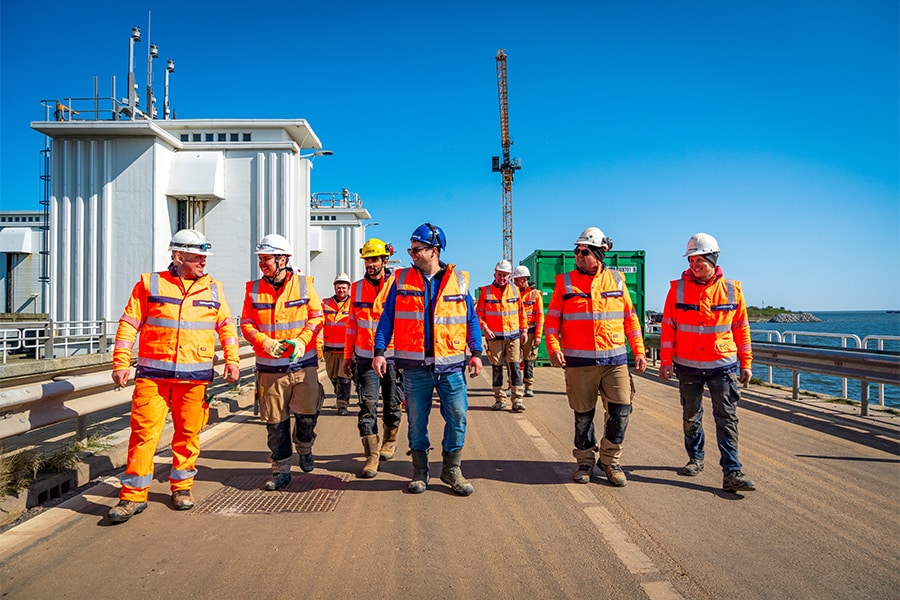
A-team stands in for Netherlands' largest immersion operation
The sinking of the two elements of the Maas Delta Tunnel in the Blankenburg connection will undoubtedly go down in the history books. Never before in the history of Dutch immersion tunnels have such large elements been immersed. The operation also takes place in fast flowing water in one of the busiest areas of the Rotterdam port area. Logical, then, to hire the A-team.
The Maas Delta Tunnel will soon be formed by two elements 200 meters long, 42 meters wide and 8 meters high, which will be immersed one after the other in the New Waterway. Both elements will be built in a construction dock on the approaches, one on the southern bank, the other on the northern bank. A-team then handles the raising, transportation and immersion of both tunnel elements. A-team is a joint venture between DEME Infra Marine Contractors (DIMCO) and Strukton Immersion Projects, both acclaimed for their extensive track records in tunnel immersion.

Different design
"For this challenging immersion operation, we are joining forces," says Eelco van Putten of DIMCO. "By the way, we have a double role in the project. We are part of the main contractor combination BAAK and together with Strukton Immersion Projects we are responsible for the immersion operation." Incidentally, the tunnel elements exist only on "paper". The realization of the ramps to the 30-meter-deep Maas Delta Tunnel is currently underway. "The ramps will be sealed off from the Nieuwe Waterweg with a double headwall," explains Robbert Martens of Strukton Immersion Projects. "Then the construction dock will be put dry and BAAK will start the construction of both elements that will be ready in two years." The design of the elements differs from that of typical Dutch zinc tunnels, Van Putten adds. "The ballast concrete is intertwined in the immersion design and contained in tubes next to the driving tube. This results in less draught; the tunnel is wider and lower than 'usual'."
Sinking operation
Once completed, the tunnel elements will be fitted with ballast tanks and sealed at the ends with steel panels. Martens: "Then the ballast tanks are filled with water, as is the construction dock. Then we will check whether the buoyancy works as planned by emptying the ballast tanks. If all that goes well, the ballast tanks are filled again and the double headwall is removed from the ramp. Again, we let the element float up from the dock floor to pull it out of the dock with one high-water wave and position it in a controlled manner on the bottom of the Nieuwe Waterweg in the same 24 hours." Van Putten: "The unique thing about the zinc tunnel design from the tender is that the Harbour only has to be blocked for two Sundays. This elaboration/design solution was rewarded in the tender. First south is positioned, two weeks later again on Sunday it is north's turn. We desperately need that time to mobilize the immersion pontoons on the new element. Moreover, the current conditions are favorable at those times because of the neap tide."

Both tunnel elements are immersed in a zinc trench, leaving a 2-meter gap between the last element and the ramp. "The gap is sealed with a closing joint," Martens says. "We install the steel formwork panels around the opening so BAAK can make the concrete work. The sinkhole is then backfilled with soil and a stone protective layer is applied on top of the elements to protect the tunnel from falling or dragging anchors."
"A particularly good collaboration has already developed and this is ensuring that we are delivering a top performance in this (design) phase. The final sinking of these elements will be carried out to specification down to the smallest detail on the basis of the mutual trust that has been built up and the intensive cooperation."



